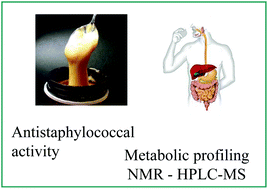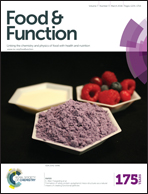Antistaphylococcal activity and metabolite profiling of manuka honey (Leptospermum scoparium L.) after in vitro simulated digestion
Abstract
The antistaphylococcal activity against methicillin-susceptible and -resistant Staphylococcus aureus and the metabolite profiling of manuka honey (MH) were investigated before and after in vitro simulated gastric (GD) and gastroduodenal (GDD) digestions. Undigested manuka honey showed antibacterial activity against all the tested strains, the GD sample showed no activity against S. aureus, and the GDD honey showed an antistaphylococcal activity, which was slightly reduced in comparison with the undigested sample. To explain these results, methylglyoxal (MGO), to which most of the antibacterial activity of MH is ascribed, was subjected to in vitro simulated GD and GDD. After digestion, MGO showed antibacterial activity at concentrations definitively higher than those registered in digested MH samples. These results showed that the antistaphylococcal activity registered after digestion cannot be ascribed to MGO. Thus metabolite analysis, carried out using an explorative untargeted NMR-based approach and a targeted RP-HPLC-PAD-ESI-MSn analysis focused on bio-active substances, was used to highlight the chemical modifications occurring from digestion. The results showed that (1) the level of MGO decreases and (2) the content of aromatic compounds, such as leptosin and methyl syringate, markers of manuka honey, was stable under gastric and gastroduodenal conditions, whereas (3) the levels of acetic and lactic acids increase in particular after gastroduodenal digestion, being 1.5 and 2.8 times higher in GDD-MH than in UND-MH, respectively. Overall, the results obtained from chemical analysis provide at least a partial explanation of the registered antibacterial activity observed after gastroduodenal digestion.


 Please wait while we load your content...
Please wait while we load your content...